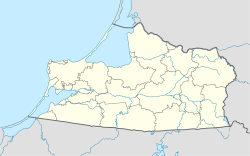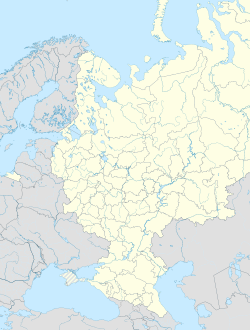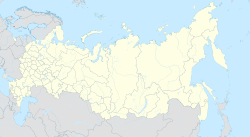world.wikisort.org - Russia
Gayevo (Russian: Гаево) is a rural locality (Russian: село, lit. 'village') in Kaliningrad Oblast, Russia.
Gayevo
Гаево | |
|---|---|
Rural locality | |
Location of Gayevo  | |
 Gayevo Location of Gayevo  Gayevo Gayevo (European Russia)  Gayevo Gayevo (Russia) | |
| Coordinates: 54°51′14″N 20°48′6″E | |
| Country | Russia |
| Federal subject | Kaliningrad Oblast |
| Administrative district | Guryevsky District |
| First mentioned | 1405 |
| Population | |
| • Total | 57 |
| Time zone | UTC+2 (MSK–1 |
| Postal code(s)[3] | |
| OKTMO ID | 27707000656 |
History
The village was mentioned in 1405. In 1454, King Casimir IV Jagiellon incorporated the region to the Kingdom of Poland upon the request of the anti-Teutonic Prussian Confederation.[4] After the subsequent Thirteen Years' War (1454–1466) the settlement became a part of Poland as a fief held by the Teutonic Knights[5] and Ducal Prussia. From the 18th century, it was part of the Kingdom of Prussia, and from 1871 it was also part of Germany, within which it was administratively located in the province of East Prussia. After Germany's defeat in World War II it was annexed by the Soviet Union. Prior to annexation to the Soviet Union, the village was known as Cropiens in German or Kruopynai in the Lithuanian language which both derive from Krōpīnō in Old Prussian. This village was the birthplace of Lithuanian painter Pranas Domšaitis who painted landscapes of the vicinity.[6]
The contemporary Russian name of the settlement derives from gaj, the Slavic word for grove which is not uncommon for place names in Central and Eastern Europe.
References
- Russian Federal State Statistics Service (2011). Всероссийская перепись населения 2010 года. Том 1 [2010 All-Russian Population Census, vol. 1]. Всероссийская перепись населения 2010 года [2010 All-Russia Population Census] (in Russian). Federal State Statistics Service.
- "Об исчислении времени". Официальный интернет-портал правовой информации (in Russian). 3 June 2011. Retrieved 19 January 2019.
- Почта России. Информационно-вычислительный центр ОАСУ РПО. (Russian Post). Поиск объектов почтовой связи (Postal Objects Search) (in Russian)
- Górski, Karol (1949). Związek Pruski i poddanie się Prus Polsce: zbiór tekstów źródłowych (in Polish). Poznań: Instytut Zachodni. p. 54.
- Górski, pp. 96–97, 214–215
- "DAILININKAS PRANAS DOMŠAITIS (1880–1965)". Lietuvos Dailės Muziejos. Retrieved 9 March 2022.
На других языках
[de] Gajewo (Kaliningrad)
Vorlage:Infobox Ort in Russland/Wartung/Daten- [en] Gayevo, Kaliningrad Oblast
[ru] Гаево (Калининградская область)
Гаево — посёлок в Гурьевском городском округе Калининградской области. До 2014 года входило в состав Храбровского сельского поселения.Другой контент может иметь иную лицензию. Перед использованием материалов сайта WikiSort.org внимательно изучите правила лицензирования конкретных элементов наполнения сайта.
WikiSort.org - проект по пересортировке и дополнению контента Википедии